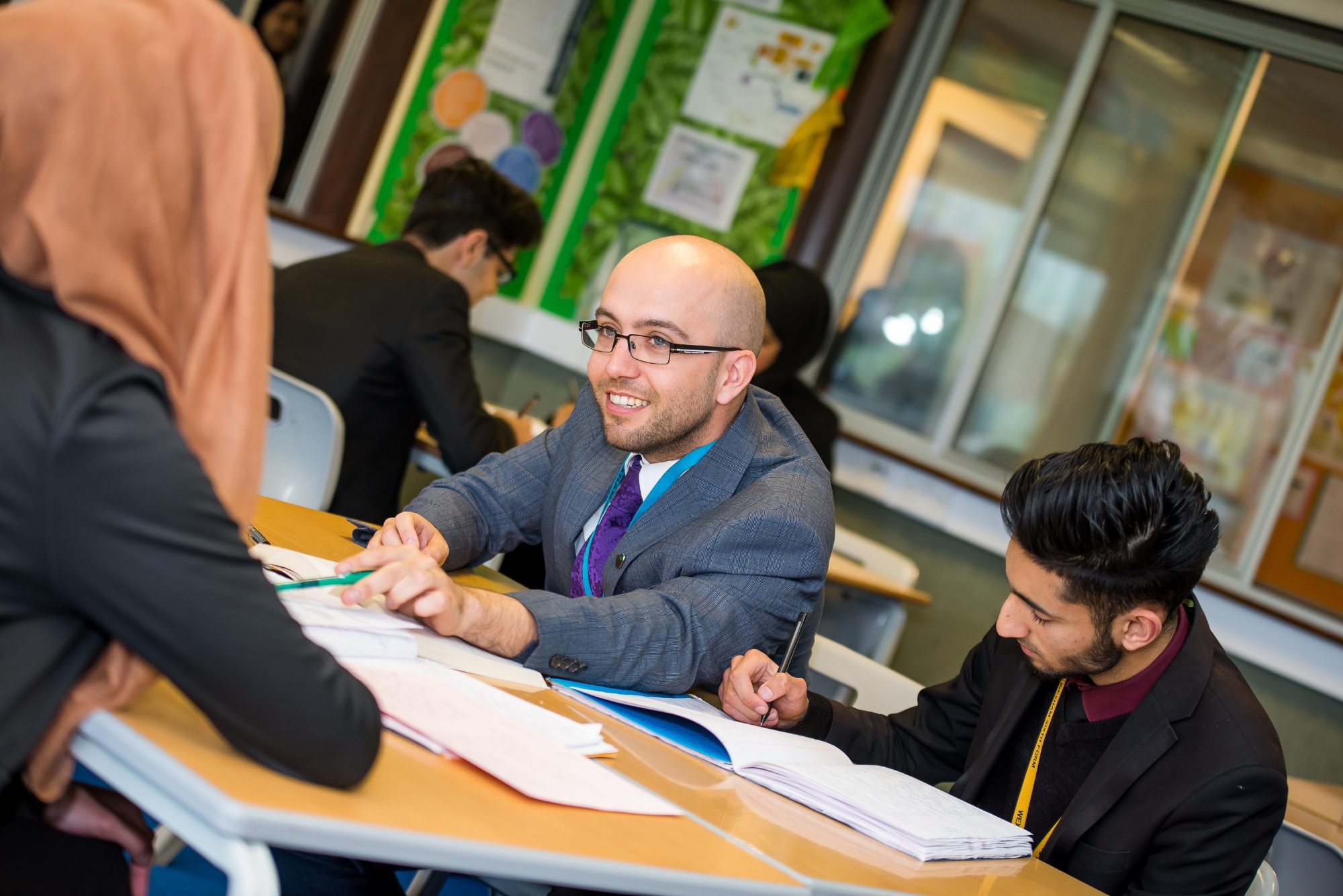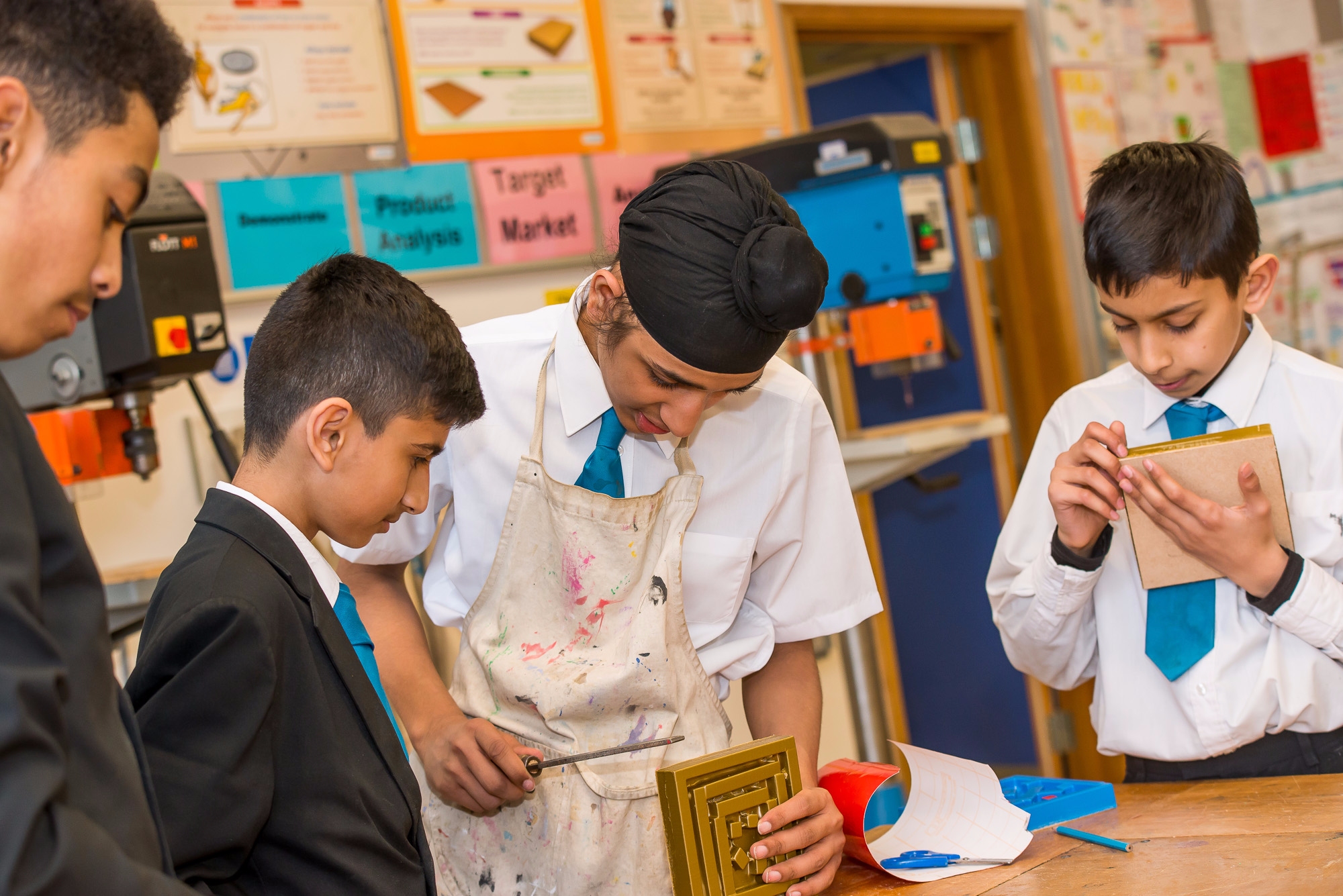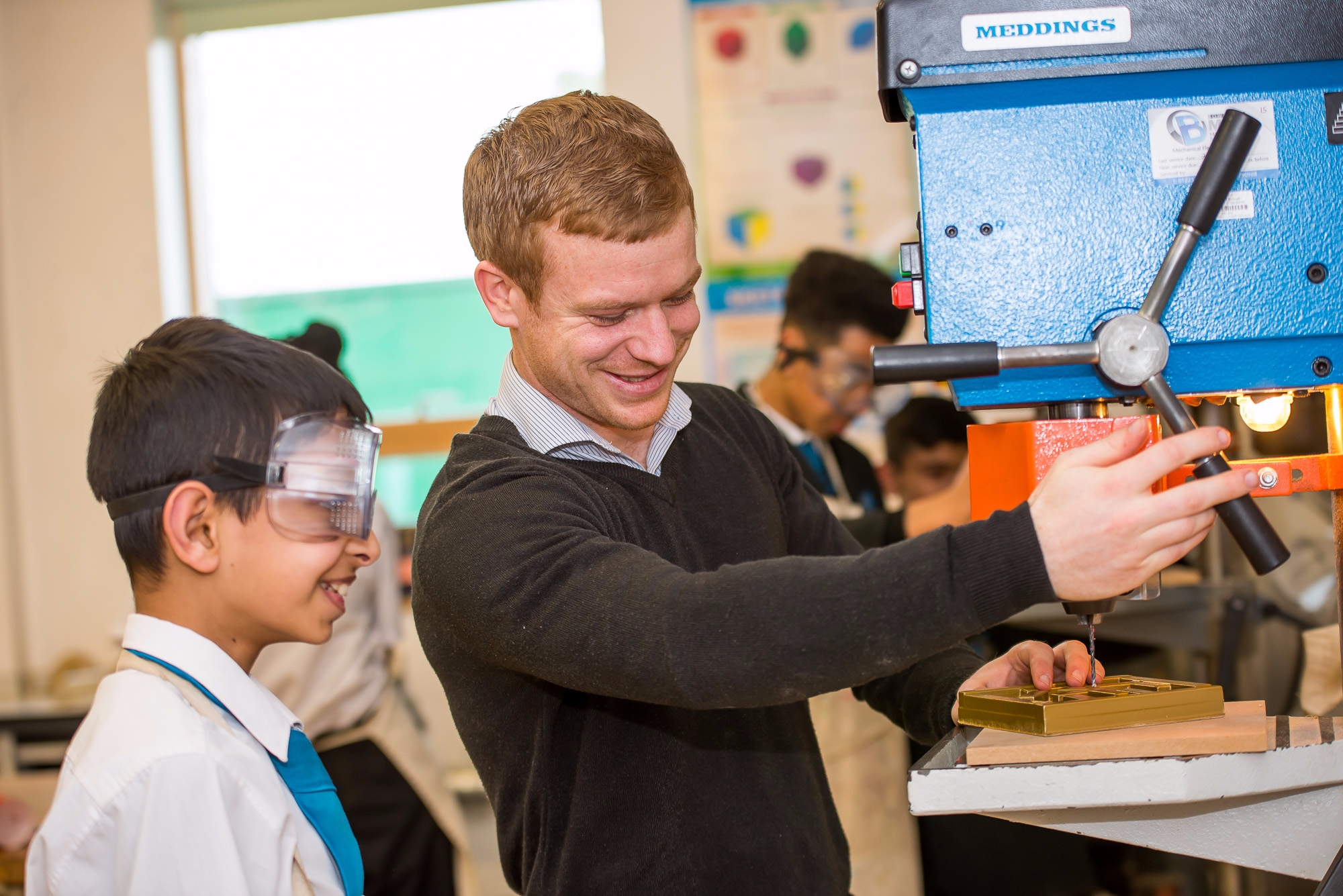Maths
You are here:The Team and Facilities:
The Mathematics department which consists of nine members of staff (Leader of Department, an Assistant leader, a Lead Practitioner, four classroom teachers and a specialist teaching assistant) is located in the main building of the school with 8 dedicated classrooms.
Key Stage 3
The curriculum for Year 7 is a well-balanced blend of the six core components of the National Specification for Mathematics. Its sequencing is intended to put the skills acquired at Key Stage 2 into a variety of different contexts, such as statistics, probability and graphs, so that pupils are required to draw on existing knowledge in order to deal with new and unfamiliar problems, as much as possible.
In Year 8, an increasing level of challenge is introduced, whilst making progressive links with concepts met previously in Year 7. It is for this reason that the acquisition and retention of knowledge during the first year is so crucial for establishing good mathematical foundations. The curriculum continues to address the specification across all six areas, whilst delving deeper into their respective disciplines
Year 9 sees learning begin to bridge the transition into the GCSE specification. During this year, the curriculum has a greater emphasis on geometric measures and constructions, as well as algebraic proficiency. Students are introduced to famous mathematical results such as Pythagoras’ theorem, pi and the trigonometric ratios in right-angled triangles. These topics are intended to invoke a sense of awe and curiosity in our students, who will be challenged to begin to adopt a much more sophisticated approach to mathematics.
Pupils in Key Stage 3 have the opportunity to take part in the UKMT Junior Maths Challenge, and attend lunchtime/after school homework/support sessions.
Key Stage 4
The Maths GCSE has a two-tier system with some students completing the foundation paper and others completing the higher paper.
Foundation
The foundation curriculum largely prompts learners to apply their existing knowledge from Key Stage 3. Algebra and Geometry form a large part of the curriculum, given their respective weightings in the specification (accounting for nearly 50% of examined content). The sequencing of the topics met throughout the academic year is intended to encourage fluency and proficiency in these areas at the earliest possible stage.
Higher
The curriculum, in line with the specification for the Higher tier of entry, is one that is ambitious in its challenge of students – prompting a much greater need to be fluent with algebraic techniques and principles than ever before. At this stage of their learning of the Higher curriculum, Year 11 students are exclusively taught the concepts forming much of the Grades 8 and 9 content.
Key Stage 5
The A Level Mathematics course consists of both Pure and Applied units. The Pure aspect of the course mainly focuses on Algebra and developing algebraic concepts from Higher GCSE further. Towards the end of the year exponentials, logarithms, differentiation and integration are introduced. Hypothesis testing is introduced in the applied course part of the statistics unit. In mechanics the main focus is on forces, motion and kinematics.
The second year of A Level uses the concepts introduced in Year 12 further by applying them to solve problems in both the Pure unit and the Applied unit. For statistics and mechanics, the main focus is on modelling the concepts to real-life situations.
SUBJECT |
YEAR GROUP |
exam board |
specification |
| Maths | 10 and 11 | Edexcel | Pearson Level1/Level 2 GCSE (9-1) In Mathematics (1MA1) |
| Maths | 12 and 13 | Pearson Edexcel | Advanced GCE in Mathematics (2210) |
Please see links below for the Maths Curriculum Intent and easy read curriculum map, which explains what your child is learning and when throughout the year.





